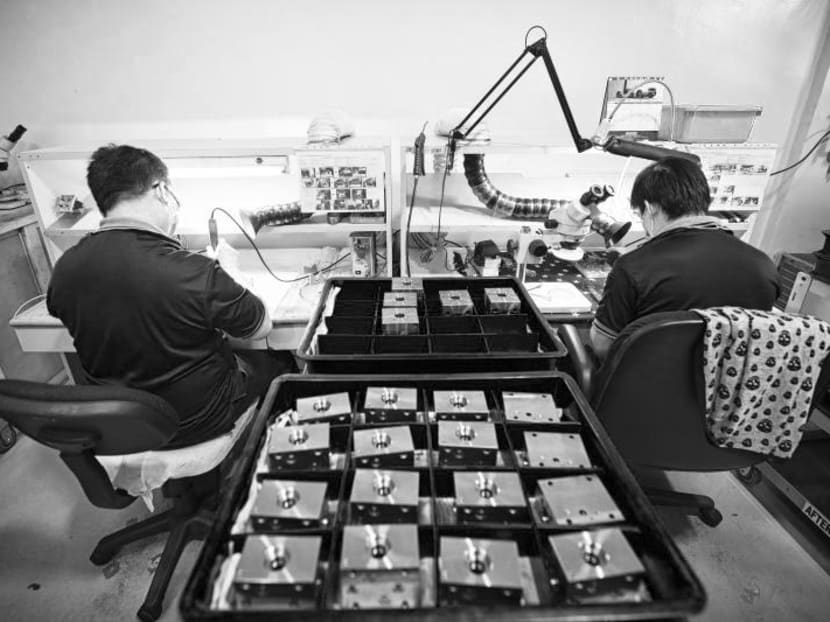Singapore’s manufacturing output growth slows sharply in January
SINGAPORE — Manufacturing output continued to rise in January, helped by the electronics, chemicals and precision engineering clusters, but growth slowed steeply from the gains in December as pharmaceuticals production slumped.

The increase in overall manufacturing output in January eased from December’s revised 22.1 per cent gain, data from the Economic Development Board showed. Bloomberg file photo.
SINGAPORE — Manufacturing output continued to rise in January, helped by the electronics, chemicals and precision engineering clusters, but growth slowed steeply from the gains in
December as pharmaceuticals production slumped.
Total manufacturing output increased 2.2 per cent last month from January a year earlier, compared with December’s revised 22.1 per cent gain, showed data from the Economic Development Board (EDB) on Friday (Feb 24).
Economists in a Reuters poll had expected an 8.4 per cent year-on-year increase in January.
Excluding biomedical manufacturing, output grew 7 per cent.
Maybank Kim Eng economists Chua Hak Bin and Lee Ju Ye said the slowdown in growth may also have been due to fewer production days because of the Chinese New Year holidays, which fell in January this year versus February last year.
“We remain positive about the manufacturing recovery, which supports our call for gross domestic product (GDP) growth of 2.5 per cent in 2017,” they said.
However, Nomura analysts Euben Paracuelles and Brian Tan noted that the latest output data are consistent with their view that the recent surge in electronics production may not be sustainable and continue to support headline GDP growth beyond the first half of the year.
“Electronics output growth could rebound in February as the base effect fades, but this will likely remain narrowly fuelled by semiconductors … We also believe the broader economy is still on a weak footing and vulnerable to the threat of protectionist policies in the United States,” they said.
Output from the electronics cluster rose 14.8 per cent in January, easing from the 49.2 per cent gain in the previous month, with growth led by semiconductors and computer peripherals.
The precision engineering cluster grew 24 per cent in January, with support from the machinery and systems as well as precision modules and components segments.
The chemicals cluster gained 3.5 per cent, little changed from the 3.7 per cent gain in December, with growth coming from the petroleum and petrochemicals segments.
The biomedical manufacturing cluster contracted by 13.5 per cent, reversing from the 45 per cent surge in the preceding month, as pharmaceutical output fell 18.3 per cent.
EDB said this was due to a different mix of active pharmaceutical ingredients produced and lower output of biological products.
The biomedical manufacturing cluster is known to be volatile on a monthly basis due to the lumpy nature of production processes.
Output in the general manufacturing industries cluster decreased 13.8 per cent last month, with all segments registering declines. The transport engineering cluster also faltered, with a decline in output of 3.8 per cent.
EDB said the marine and offshore engineering segment contracted on account of a lower level of rig-building activity and weak demand for oilfield and gasfield equipment amid the low oil price environment.






